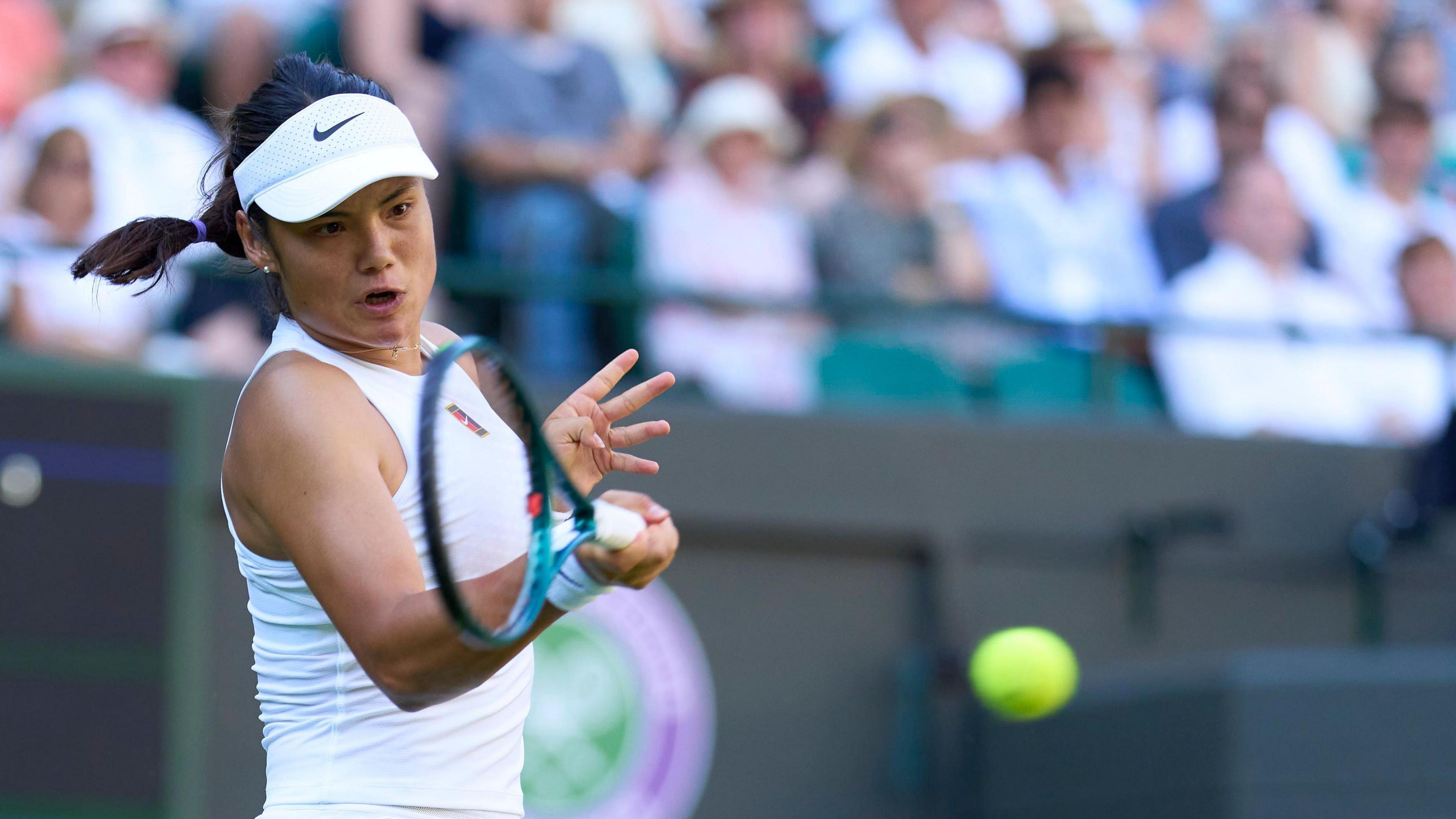Introduction
As Emma Raducanu prepares to face 2023 Wimbledon champion Marketa Vondrousova in a tough second-round clash, former WTA player and BBC analyst Naomi Broady outlines why calculated risk-taking may be the British number one’s best shot at victory.
Technical Adjustments Fueling Raducanu’s Forehand

Since adding Mark Petchey—former coach to Andy Murray—to her team, Raducanu has been refining key elements of her game. Most notably, she’s been working on her forehand and serve to become more aggressive from the baseline.
“Emma Raducanu is a clever player who thrives when she understands the logic behind each tactic,” says Broady. “Mark Petchey’s technical insight has given her confidence to trust in this more aggressive style.”

The Power of First-Strike Tennis
Raducanu’s game plan against Vondrousova hinges on first-strike tennis. As Broady points out, grass courts favor aggressive baseliners who take control of points early. Raducanu’s ability to step in on returns and dictate from the baseline will be crucial.
Her recent first-round win against Mimi Xu showcased this well—Raducanu won 50 out of 83 rallies lasting four shots or fewer Emma Raducanu. That ability to end points quickly can help neutralize Vondrousova’s angles and awkward left-handed spin.
Understanding the Risk-Reward Balance
“Taking more risk means playing closer to the sidelines and accepting that not every shot will land,” Broady explains. But this risk is strategic: Emma Raducanu must disrupt Vondrousova’s rhythm early and often, rather than passively rallying and waiting for an error.

The mindset shift is clear. Raducanu is now leaning into her natural aggression, a trait that helped her win the 2021 US Open, and it could once again serve her well at Wimbledon.
Why Vondrousova Is Still Dangerous
Though she’s ranked outside the top 150 due to injury setbacks, Vondrousova remains a massive threat. She recently won the Berlin Open, defeating Madison Keys, Ons Jabeur, and world number one Aryna Sabalenka.
Her game fits grass surprisingly well. Trained on low-bouncing indoor hard courts in the Czech Republic, she’s comfortable with fast surfaces. Her deceptive lefty serve and angled forehand make her a nightmare opponent, especially when she comes to the net—skills honed by years of doubles play.
Emma’s Game Plan: Target Weakness, Maintain Court Position
Broady emphasizes that Raducanu’s goal should be to keep Vondrousova on the back foot, particularly by maintaining her court position after the return. “Against someone who thrives on opening up angles, Emma needs to get the first strike and not retreat.”

Grass favors players who step inside the baseline and keep pressure on. Raducanu’s improved serve and renewed confidence in her forehand should allow her to do exactly that—if she stays bold.
Conclusion
Raducanu faces one of her toughest challenges yet on Centre Court, but with the right blend of technical execution and mental bravery, she can break through. Her success will hinge on how well she executes her aggressive game plan, especially against Vondrousova’s crafty angles and net play.
As Naomi Broady notes, it’s a match of risk vs control, power vs precision—and Raducanu’s future at Wimbledon may depend on her ability to tilt that balance in her favor.
Follow more Wimbledon 2025 updates and expert analysis on The Morning News Informer.









